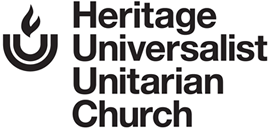The Committee will manage and operate the Endowment Fund based on the policy that for the immediate future the purpose of the Fund is growth rather than provision of present income, and that this purpose will continue until the target goal of $100,000 is accumulated, at which time significant modification will of course be necessary. The Fund will be managed using the fundamental concept that capital markets are generally efficient. Accordingly, the returns generated by the Fund should be directly proportional to the degree of risk assumed. Over time, investments should have returns that approximate the returns of the underlying market.
The Committee believes that the degree of risk assumed is a matter ultimately to be determined by the Board of Trustees. The investment portfolio chosen should reflect a degree of risk and return with which the Board feels comfortable for long-term congregational monies to bear. However, the Committee should recommend an investment policy which the Board might find acceptable. The Committee should also be responsible for the implementation of said policy, or other policy agreed to by the Board. Thus, while it would be extremely cumbersome for the Board to approve individual investment choices, the Board certainly can approve a general investment vision.
The model we propose would be based on a paradigm much like the ideal relationship between investment adviser and client, wherein the client, with assistance, identifies the financial goals and the risk level it is comfortable with and the adviser implements them.
The investment policy that the Committee recommends is based on the concept of diversification consistent with the degree of risk desired. Because markets are efficient, the Fund should pay the lowest possible fees in making its investments. In short, neither the Committee nor virtually anyone else can consistently outperform the investment market taken as a whole, certainly not without assuming a degree of risk not commensurate with the operation of an endowment fund. The most efficient way of instituting such a plan is by the use of index funds, each of which (ideally) reflects the return of an individual asset class.
The Committee recommends an investment allocation providing diversification among multiple asset classes. To help determine the percentages to be invested in each asset class, we have considered the percentages normally used by major multi-asset mutual funds and individual retirement plans which emphasize moderate to high (not aggressive) growth. These generally allocate between 50% and 70% of the total to equities (stocks or mutual funds that hold stocks) and 30% to 50% to debt (bonds and money market instruments, broadly conceived). While very large endowment funds invest in other assets, such as commodities, we do not see these as risk-appropriate for our Fund, particularly given its size.
Accordingly, the Committee suggests an allocation of assets comprised of 65% equities and 35% bonds. The 65% in equities should be divided between domestic and foreign investments. We suggest 45% of gross assets go to domestic investments and 20% go to foreign investments. To the extent feasible, these should reflect the total market, so that the 45% of assets going to domestic investments would be divided among large, medium, and small companies, in proportion to their segment of the total market. However, we have a bias for overinvesting in large companies, particularly in the foreign investments.
The 35% of investments in bonds should be 15% in Treasury-Inflation Protected securities and 20% in other bonds, primarily short-term and intermediate term.
In terms of the vehicle through which the investments will be made, the most efficient acceptable mode is through an account with a major brokerage. There are many suitable ones, including Fidelity, Schwab, Vanguard, Price, etc. In the absence of special situations, the low-cost provider would be the most desirable, assuming adequate service level. However, the Committee has been given to understand that Heritage already has an existing relationship with Schwab. Should the Board choose to continue this for the Fund, such continuation would be acceptable.
We contemplate that the account would have two signers, one being a member of the Board of Trustees and the other being the chair of the Endowment Committee.
Since investment firms routinely distribute account updates at least quarterly, distribution of such account updates, with brief accompanying commentary, should constitute appropriate notification to the Board of Trustees. No additional software need be purchased at this time, nor is the purchase of any such foreseen for the near future.
The Committee has not established a process specifying how new members should be elected.
~ March 2008
